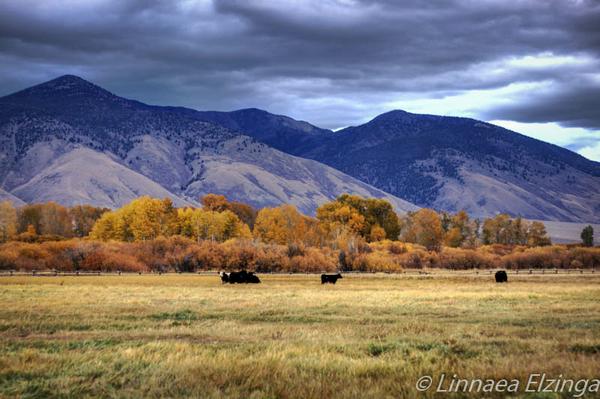
“Do you guys ever process cull dairy cows from big dairies for beef?” I waited patiently for Amber’s answer.
“No, we don’t. We occasionally do a dairy type cow, usually like somebody’s family milk cow that somebody fed out to fat for their own beef consumption, but we don’t have any customers that are big dairies.” She paused. “Why do you ask?”
I don’t even know if there are any big dairies in the Great State of Montana. It’s too dang cold, I think. Amber, Dewey, and Jayson operate in a small town in the middle of nowhere. I’m amazed that they have enough volume to stay in business.
“I’m just wondering about contamination possibilities—you know, like about this most recent huge commercial beef recall in Arizona. Let’s just say I’m glad you don’t–and please don’t ever start. Thanks again, Amber.” I hung up the phone happily. I just needed to know for sure. I couldn’t figure out why a dairy, especially a mega dairy would want to deal with our little processor, but I needed to know for my customers.
It’s one of those things I ask and check out in detail that you, as our customer and partner, would probably not think to ask. You trust us. It’s why many of you buy our beef, pork and chicken. You have allowed us to be your expert, and as such, you figure you don’t need to know the nitty gritty. But if you ever did, I would be happy to take that phone call, or email, anytime (honestly—just respond to this very email, and you’ll get me).
But maybe you want to know more. Maybe you heard about the beef recall a few weeks ago. 6.9 million pounds of ground beef produced in a single Arizona plant, supplying the following nicely named brands: Cedar River Farms Natural Beef, Comnor Perfect Choice, Gourmet Burger, Grass Run Farms Natural Beef, JBS Generic, Showcase, and Showcase/Walmart. And you think in terms of numbers, as most Americans do. Let’s see, 57 people got sick out of 325 million folks in the US. Chances are, it wouldn’t be you, right? It’s the same reason many of you never buy lottery tickets, even with the winning one worth 900 million this last week (we don’t either—after all, I couldn’t even think of what I would spend it on. Probably some more cows).
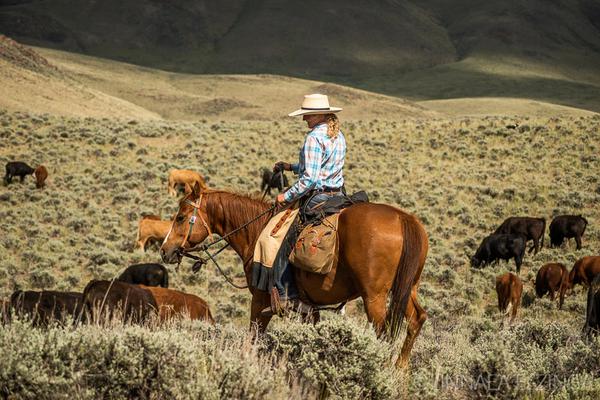
But still, there is that nagging question: Why does this happen? The official report is yet to come, but there are some pretty strong lines of evidence. To give you a firsthand glance into what many people in the business think is the how and why, I’ll introduce you to a sort of composite friend of mine. I’ve worked with guys like this; I’ve eaten at their table. I’ve shared thoughts and dreams with them as we together headed down the road of agriculture. But as Yogi Berra said, when that fork showed up in the road, we took it. And we parted ways.
And you need to know that they are not evil. Instead, they are hopelessly stuck on an ever steepening, and at the same time sinking treadmill. Paradigms like ours are so far from their reality that a guy like I’m going to introduce you to would rather quit agriculture and become a real estate broker, perhaps doing the unthinkable of subdividing the very farmland that he strove so hard to save. And so, we begin:
As he waited for the long stoplight in Visalia, lifelong dairyman Mike DeYoung checked his cowherd statistics on his phone. They were updated immediately each time his cows were milked in the automated rotational 50 head carousel on his 4500 cow dairy. Mike operated in the Golden Age of dairy production in the Golden State; at no time in history had dairy production been higher. His Tulare County dairy, nestled in the California’s Central Valley just north of Bakersfield, was a little above average in size, and to be competitive in today’s rocky market of low milk prices, he readily adopted any type of electronic monitoring he could to hack infinitesimal savings or efficiencies to give him an edge. “You can’t manage what you can’t measure,” he would often say.
For him, it started with trying to realize economies of scale. His immigrant father, Klaus, had come from the Netherlands as a young man, and built a dairy after the model he and his ancestors had followed for centuries in Europe. Cows had names, and herds were generally smaller than 100 head of Holsteins, the stereotypical black and white milk cow breed that Mike still used in his 4500 cow dairy. The old model also meant that you would keep old Bessie even if she dropped below 30 lbs a day in milk production. At 8.6 lbs per gallon, that was less than 3.5 gallons a day, an amount that could easily fit into the stainless milk bucket of the day.
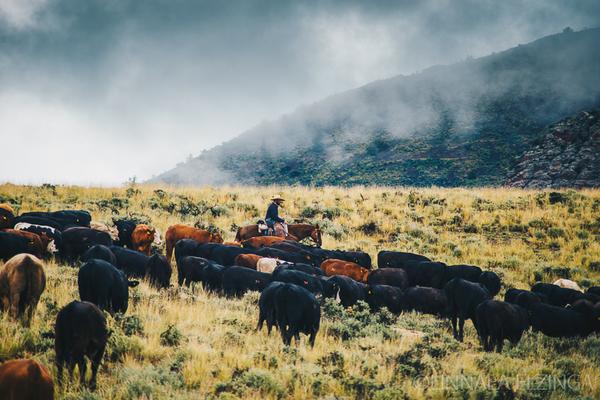
Having a cow produce less than 30 lbs was unthinkable for 62 year old Mike; cows in his dairy produced twice that. And everyone knew that a herd of 100 cows did not produce a viable living. Even the amount of times milked per day wasn’t sacred. For centuries, cows have been milked twice a day. Only in the past 20 years did 3 times a day milking become common. But the result of it and other high pressure management stresses like concentrate feed and confinement living, is that cow life expectancy plummeted from a 15 year average to between 4 and 6. Sure, they yielded more milk over their total lives with today’s production governed genetics, but now nameless but numbered Bessie simply burned out from the incessantly high pressure of production that producers like Mike De Young had to answer to. He had to hack every system, every production protocol relentlessly to eke out a razor thin margin that would allow him to survive.
The problem was that nearly every upgrade insatiably demanded lots of dollars, further cutting into that razor’s edge. He mechanized with robotic milkers and feeders. He put his cattle in huge feed yards instead of pasture. He placed data collecting and identifying leg bands on every cow. He had sensors that kept data on every cow as she came into milking at each of his 50 carousel milking stations. He knew when she slept, and when she ate and how often. And he knew immediately, from his smartphone dataset that things were unexplainably slipping: out of his 3800 cows that today were actively providing milk, an unprecedented number were dramatically down in milk production. Despite their being at the prime of production—most of them were only in their second lactation, their milk output was dropping, and some were even under the 30 pounds threshold.
Just a few years ago, he readily culled such cows. Beef prices were good then, and the lean meat produced by dairy cows, along with their relatively huge frame size, could bring a tidy sum of over two thousand dollars. But now, cull cow prices were much lower, and he would certainly lose money by dumping them on a low market.
But he had to. They weren’t making him money. What was wrong with those cows? He had tried everything, including antibiotics. In doing so he opened a pandora’s box of protocol: Mike had to pull cows treated out of the milk production stream for human consumption. He’d have to feed the tainted milk to calves, but for the first few days, he’d have to store it to let antibiotic residue denature so as not to adversely affect the calves gut flora. It was a huge hassle. Then, after enough withdrawal time, the treated cows could re-enter production. But they still had low marks, exacerbated by a reduction in their own necessary gut bacterial biomes from antibiotic exposure.
The unseen production thief: Mike was dealing with a form of systemic infection. He just couldn’t finger it. It was a particularly difficult to treat bacterial infection that had found its way into his cowherd. Epidemiologists had named it Salmonella Newport (nice claim to fame for the city of Newport, I think), and like many Salmonella strains of this day, it is known for its antibiotic resistance. As a result, farmers like Mike DeYoung had difficulty treating their cows for it.
Salmonella enters the cow food chain through things like fecal contamination of feedstuffs (imagine cows in muddy feedlots splashing manure into water tanks or feedlot troughs), rat feces in corn and other grain concentrate storage, or calves eating salmonella tainted milk. We humans can survive such milk (fairly common in industrial dairy production) through the process of pasteurization. Many farmers don’t heat treat their calf milk, and so the calf can ingest Salmonella at a young age.
And one day, they become cows.
And so, by either vector, the cow gets it, and it reduces milk production. Mike’s vet ran some tests. The verdict: antibiotic resistant salmonella. The vet recommended aggressive culling. This may put Mike out of business.
And that, dear reader is where our toxic tale really begins. Sure, commercial dairies have their issues. But remember, we are in the beef business.
 Mike loads up the dairy cows and sends them off to the local sale barn, which then sends them to the kill plant where they can get the best money. Let’s just say it’s the JBS beef plant in Tolleson, Arizona. JBS is a South American based beef packer, and the largest processor of red meat in the world.
Mike loads up the dairy cows and sends them off to the local sale barn, which then sends them to the kill plant where they can get the best money. Let’s just say it’s the JBS beef plant in Tolleson, Arizona. JBS is a South American based beef packer, and the largest processor of red meat in the world.
This particular plant where our friend’s cows end up is where many cull dairy cows end up. Here they are mostly made into burger to stock shelves of everything from supermarkets to restaurants. And the beef gets mixed. To the tune of a batch of 6.9 million pounds mixed. That’s a lot of dairy cows, all ground up, all fresh, not frozen, and some of them, like Mike’s, have Salmonella Newport in them.
How does this contamination happen? Nearly all of it comes from cows that have manure on them. It’s typical of cattle that come from any type of feedlot situation, especially during the rainy times of year. Even if they load on the truck clean, manure can trickle down from the deck above (cattle semi trucks are always double deckers). Then, they can easily get manure splashed on them from other Salmonella tainted cattle, even if they aren’t carriers themselves. It can be a fecal mess.
And it is honestly very difficult to peel a dirty hide off an animal without any chance for contamination. I’ve seen butchers do it, but they take painstaking care. It takes about a half an hour to do a perfect job with an experienced hand. But these large JBS type kill plants process over 400 beef cattle an hour. Not much chance for perfection there.
And now, a needed little rabbit trail: in contrast, we at Alderspring process 12-15 head at a time. Our cattle trailer has plenty of room and only one story. Our cattle come off green grass. They are clean. The travel in a pre-cleaned rubber floored trailer with plenty of ventilation, and protection from the rain and snow. The don’t mix with other animals and are processed the very first in a day (organic requires this). Ground beef and any other cut never gets mixed with beef from another animal. Every package has a lot number on it that is traceable to a single steer. Always. We know where he was born, where he grazed, and his exact genetic. Always.
Another rabbit trail: We had some German Television cameras pointing at us on the ranch this week. They had researched the world of beef, and kept hearing about us, so they wanted to know why our beef is so good. I guess I’m going to be on German TV. They spent several days here, and one of the questions they asked the kids and I, on camera, was “do you eat beef from the supermarket?”
To my kids, it was a ludicrous question. Of course not, but how do you say that politely? They didn’t even know how to answer it.
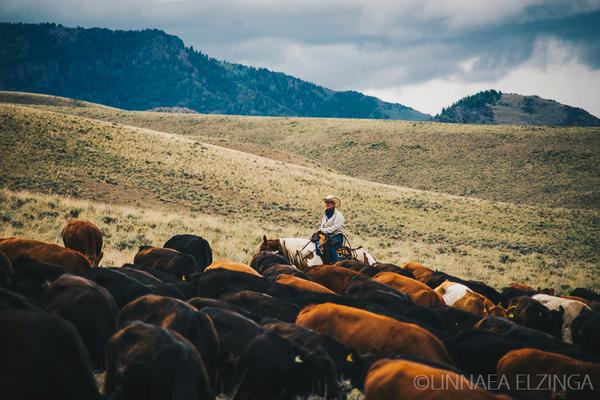 And on the other extreme, we have Mike, who is slowly losing the legacy he inherited, drowning on that treadmill called efficiency, productivity, and economy of scale, but with profitability seeming always just beyond reach. American farmers have been sold a bill of goods and are struggling.
And on the other extreme, we have Mike, who is slowly losing the legacy he inherited, drowning on that treadmill called efficiency, productivity, and economy of scale, but with profitability seeming always just beyond reach. American farmers have been sold a bill of goods and are struggling.
I miss the days when grassfed beef was uncommon, produced by true believers (discounted as nutcase hippies), and we looked poised to transform an industry into a network of small producers creating the best grassfed beef they could, and selling it directly to people, and being responsible directly to people.
Our own personal health challenges make us a family who are very serious about our beef. Cutting corners is unthinkable. If we wouldn’t eat it, how could we in good conscience sell it to other people? We know many of you by name, and you have trusted us for years.
Thank-you.
Glenn, Caryl, Girls and Cowhands at Alderspring.

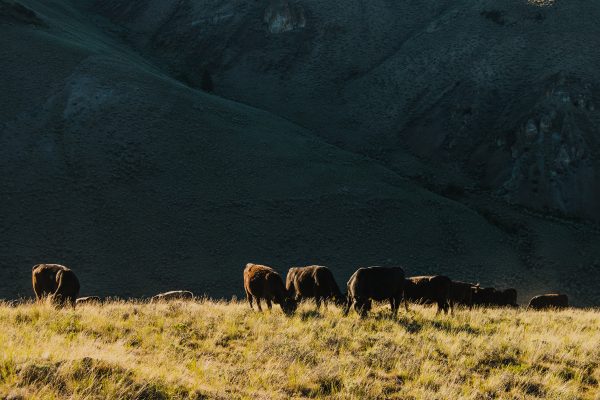


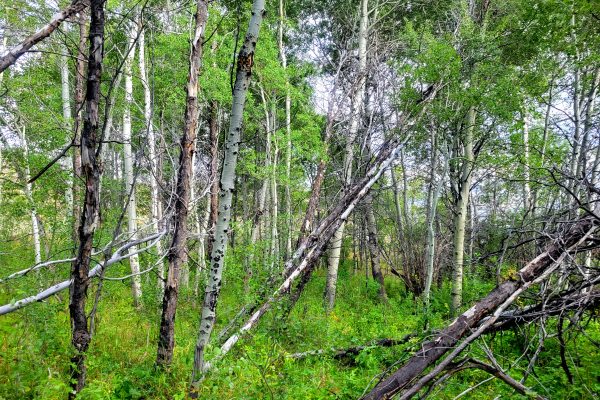


Leo Younger
As usual thanks for caring for your animals, as well as caring for all of us, consumers including yourselves, who care enough collectively to consume the entire edible parts of the animals. Information is what we yearn to feel confidence in our choices. Understanding the information is necessary to have wisdom.
Mark
God has blessed us with an ordinary man, doing an exceptionally un ordinary task. Glenn , and the rest are simple a God send , to a world in need of hope. Jesus came to give us , the way ,the truth , and the life in Himself. Glenn is here as example of what living for Christ really means!
And whatever you do, in word or deed, do everything in the name of the Lord Jesus, giving thanks to God the Father through him.
Col. 3:17